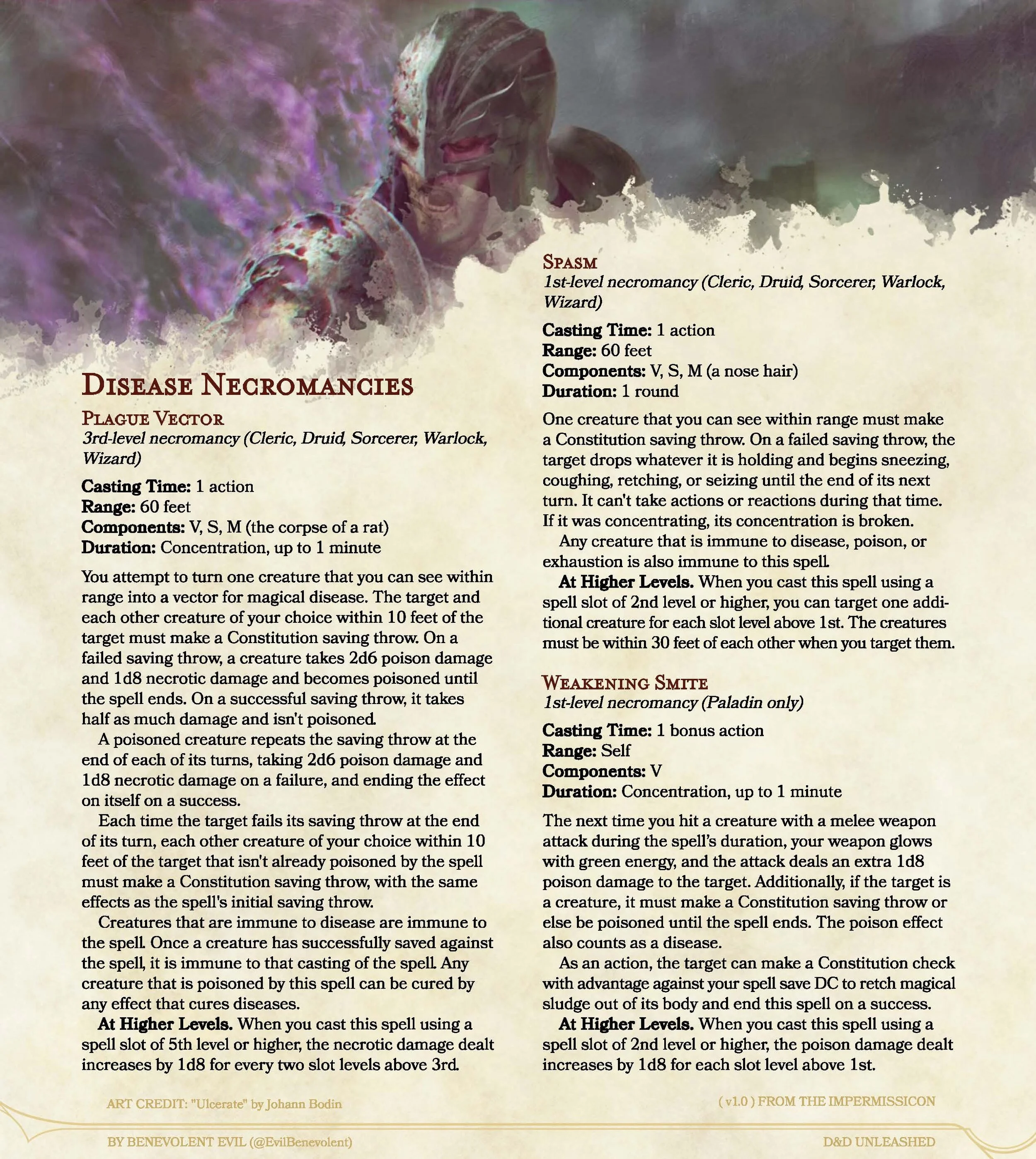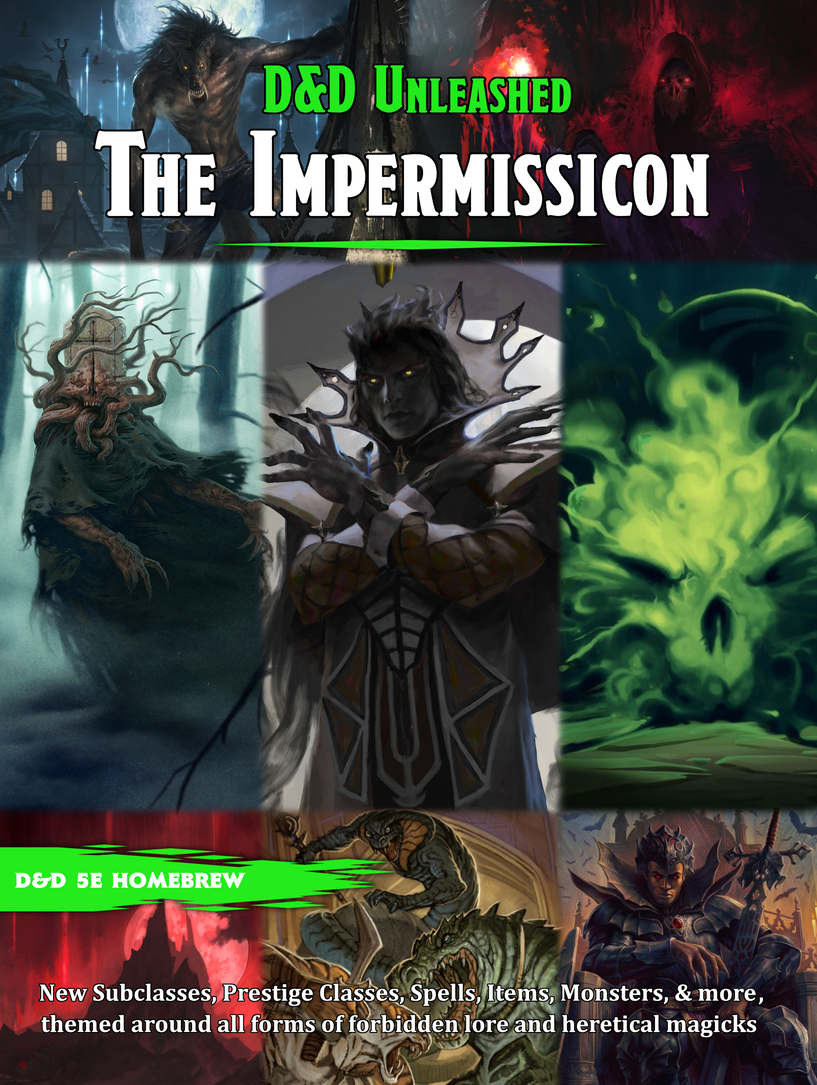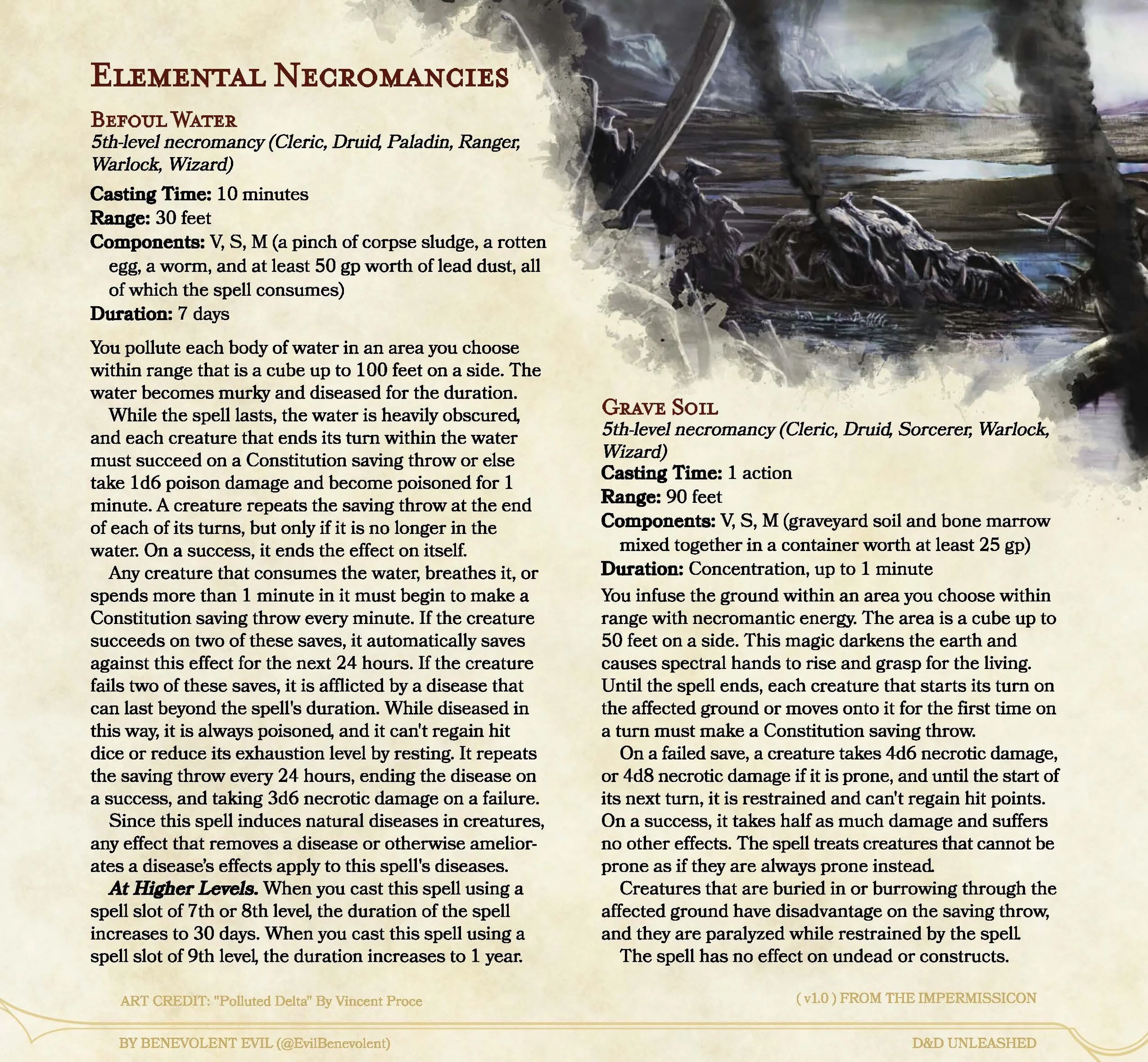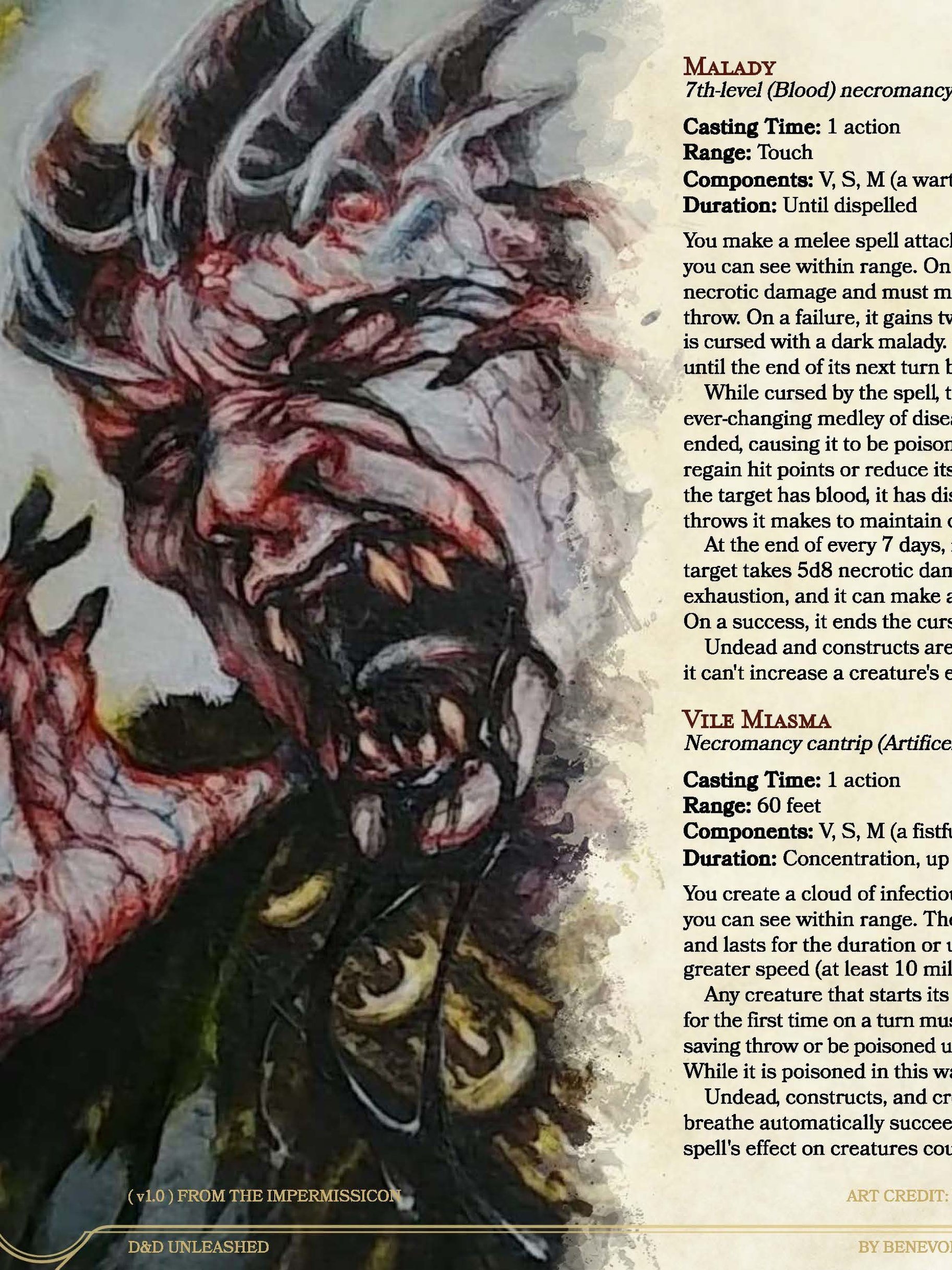New Spells: Disease Necromancies
The most updated version of this content can be found within The Impermissicon, a free 254-page compendium that you can download right here, filled with 24 subclasses, 3 prestige classes, 2 feats, 107 spells, 118 spell variants, 91 monsters, 61 magic items, 24 poisons, 23 diseases, and even more goodies themed around lycanthropes, vampires, and forbidden magic for both players and DMs!
PDF Link | D&D Beyond: Plague Vector, Spasm, Weakening Smite
Art Credit: https://www.artofmtg.com/art/ulcerate/
One of the most powerful ways of causing harm as a necromancer is to wield the dark magic of disease itself. Whether praying to dark gods for divine plagues, weaving arcane magicks to conjure and control deadly pathogens, or combining the primal toxins of nature to produce noxious miasma, evil and death-themed spellcasters of all stripes will find utility in the three disease spells previewed today, from the upcoming compendium, The Impermissicon.
Plague vector is a strong 3rd-level spell that is balanced out by its notable limitations. The first such limitation is that it is a concentration spell — to achieve comparable damage to other 3rd-level spells such as lightning bolt it would need at least a couple of rounds. In addition, the saving throw — Constitution — is generally considered one of the worst saving throws to target because monsters often have high Constitution. Add on that the poisoned condition and poison damage are the most common immunity among monsters and that the primary target has to repeatedly fail their saving throw while near other enemies for the spell to spread after the first round, and you have a spell with potent limitations that keep it in line. On top of all that, it has a smaller radius than other 3rd-level spells like fireball or spirit guardians and it has to be centered on a target that works well as a vector. Despite all these drawbacks, plague vector can change the course of a battle if used well. Placing the spell on the right target can allow the caster to spread the spell to every enemy in the battle, which provides not only damage but also the debilitating Poisoned condition. Poisoned enemies can be safely ignored while the damage-over-time defeats them, thanks to the disadvantage they suffer on attacks. Even if the initial target saves against the spell or quarantines themselves, other creatures that have already been poisoned remain poisoned and keep taking damage!
At 1st-level, spasm is a simple-but-effective debuff spell. Spasm’s power can be understood by comparing it to command, another 1st-level spell. Command allows the spellcaster to force a target to waste its turn and do something specific instead, such as dropping a weapon, falling prone, or ending a spell. Spasm trades the Wisdom saving throw for a Constitution saving throw and removes the spellcaster’s choice and control over the enemy’s actions, gaining in its place a slightly more potent debuffing effect. Spasm doesn’t force the spellcaster to choose between making the target end a spell or drop what its holding — it always does both. It also prevents the target from using reactions. The immunity limitations on this spell are important, since immunity to the Poisoned condition is the most common immunity among monsters, and some that lack that immunity are instead immune to Exhaustion (such as devas and some other celestials). Thus, spasm doesn’t work against most celestials, fiends, or elementals, and almost never works against any constructs or undead. But don’t sleep on this spell at higher levels, either! Though it scales in targets similarly to hold person, it has one major advantage over that spell: it doesn’t require concentration!
Finally, weakening smite is a new smite spell (and like all smite spells, it is paladin-only by default). It is comparable to searing smite and especially wrathful smite. Like the previous two spells in this preview, weakening smite doesn’t work against any target that can’t be poisoned or is immune to disease. But some targets with weaker Constitution scores will have a tough time removing the poison, especially if breaking the spellcaster’s concentration would require hitting a paladin wearing plate armor and a shield. This spell works wonderfully for paladins of darker oaths, such as the Oathbreaker, the Oath of Shadows, or the Oath of Grief.
PDF Link | D&D Beyond: Plague Vector, Spasm, Weakening Smite








